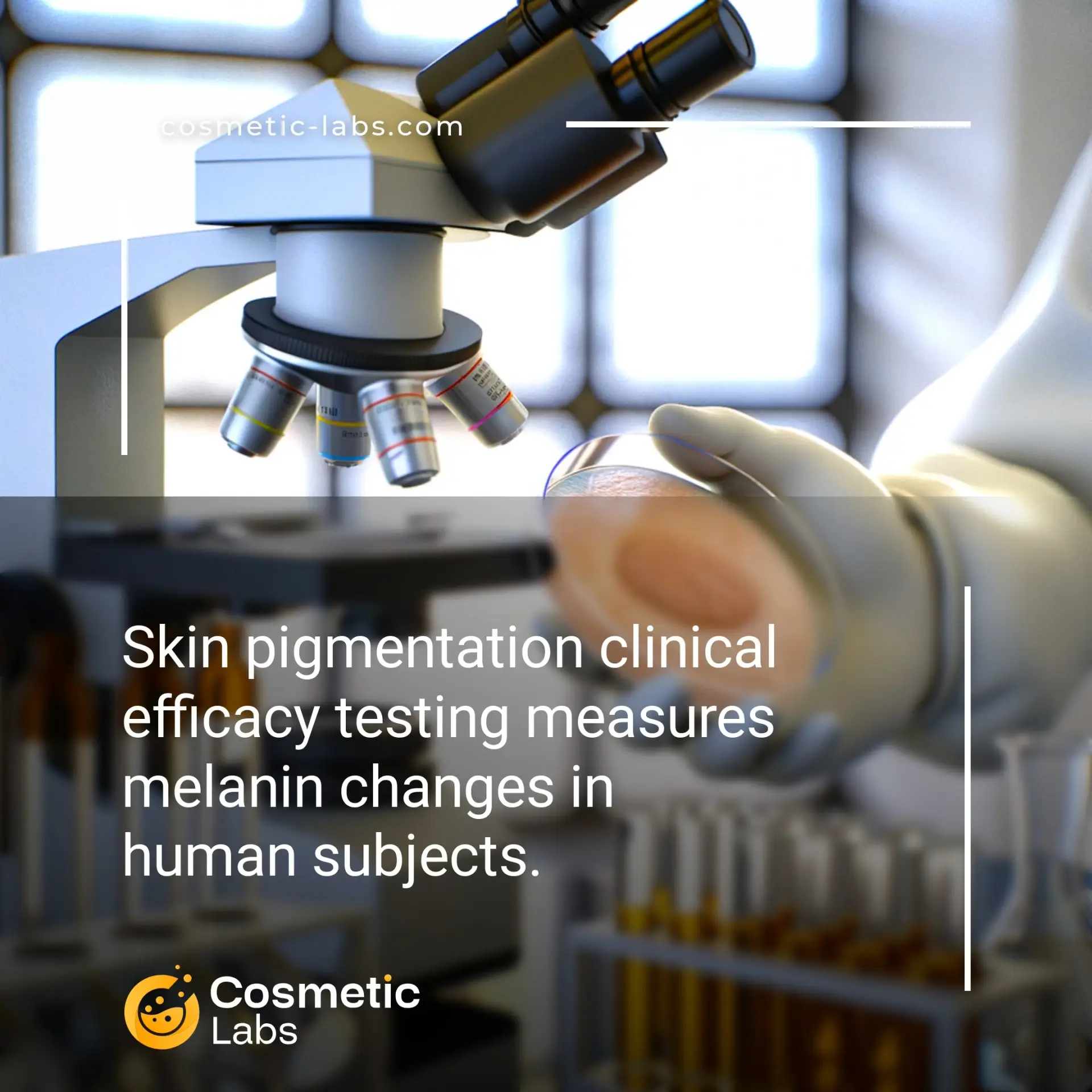Skin Pigmentation Testing Services for Beauty Brands

What is Skin pigmentation efficacy testing?
Skin pigmentation clinical efficacy testing services measure how well cosmetic products lighten dark spots, reduce melasma, or even skin tone through controlled human studies. Labs use chromameter readings and digital imaging analysis to track melanin changes over 8-12 week periods, providing the clinical data you need for product claims and regulatory submissions.
Why do you need this service?
Cosmetic brands rely on melanin inhibition testing to validate brightening serums and spot treatments before launch, measuring actual pigment reduction in controlled studies. Our partner labs conduct chromameter assessments and visual grading protocols that generate quantifiable efficacy data for marketing claims, helping you secure regulatory approval and build consumer trust with proven results that differentiate your products in competitive markets.
Who provides Skin pigmentation efficacy testing services?
All cosmetic labs providing Skin pigmentation efficacy testing services
There is no company providing these services at the moment.
Skin Pigmentation Clinical Efficacy Testing Services
Skin pigmentation clinical efficacy testing services validate your brightening, lightening, and anti-aging formulations through controlled human studies. These specialized assessments measure melanin reduction, skin tone evenness, and hyperpigmentation improvement using advanced colorimetry and dermatological evaluation methods.
Melanin Measurement and Colorimetry Analysis
Labs use chromameter devices and spectrophotometers to quantify skin color changes with precision. Testing protocols track melanin index values, L*a*b* color coordinates, and individual typology angles over 4-12 week study periods. Professional dermatologists document visual improvements using standardized photography under controlled lighting conditions.
Key measurement parameters include:
- Melanin index reduction percentages
- Skin luminosity improvements
- Hyperpigmentation spot size reduction
- Overall skin tone uniformity scores
Clinical Study Design and Regulatory Compliance
Testing facilities design studies following ICH-GCP guidelines and FDA cosmetic regulations. Protocols include proper subject recruitment, patch testing for sensitivity, and statistical analysis of results. Studies typically involve 20-50 participants with specific skin types and pigmentation concerns relevant to your target market.
Standard testing approaches cover:
- Baseline skin assessment and photography
- Product application monitoring and compliance tracking
- Weekly or bi-weekly measurement sessions
- Final efficacy evaluation and statistical reporting
Connect with certified labs on our platform to discuss your pigmentation testing requirements and receive detailed study proposals tailored to your product claims.
Practical Applications of Skin Pigmentation Clinical Efficacy Testing
Cosmetic labs provide skin pigmentation clinical efficacy testing services to validate product claims and support regulatory submissions across multiple beauty categories.
Brightening and Whitening Product Validation
Labs conduct melanin measurement studies using chromameters and spectrophotometers to quantify skin tone changes over 4-12 week periods. These tests measure L*a*b* color values and Individual Typology Angle (ITA°) to document brightening effects. Product developers use this data to support claims like “reduces dark spots by 25% in 8 weeks” or “improves skin radiance.”
Testing protocols include before-and-after photography under standardized lighting conditions, plus dermatologist assessments using validated scales. Labs recruit 20-60 participants with specific Fitzpatrick skin types to match target demographics.
Anti-Aging and Spot Treatment Efficacy
Clinical studies focus on age spots, melasma, and post-inflammatory hyperpigmentation using digital imaging analysis and dermatoscopy. Labs measure spot size, intensity, and distribution changes through specialized software that tracks pigmentation patterns over time. These studies support claims for serums, creams, and professional treatments.
Testing includes consumer perception surveys alongside instrumental measurements to correlate objective data with user experience. Labs typically run 12-16 week studies with monthly assessments to capture gradual improvements in skin tone uniformity.
| Test Method | Measurement | Typical Duration | Sample Size |
|---|---|---|---|
| Chromameter Analysis | L*a*b* color values | 4-8 weeks | 20-40 subjects |
| Digital Photography | Visual spot reduction | 8-12 weeks | 30-60 subjects |
| Dermatoscopy | Melanin distribution | 12-16 weeks | 25-50 subjects |
| Consumer Surveys | Perceived improvement | 4-16 weeks | 50-100 subjects |
Ready to validate your pigmentation claims? Contact labs on our platform to design custom testing protocols that meet your specific product requirements and regulatory needs.
